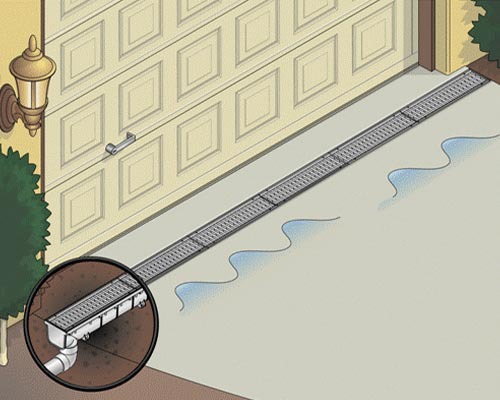What is Channel Drain?
Channel Drain (also called trench drain) is a linear drain that moves water through an underground drainage system. It collects and disperses the runoff over a large area. Think of it like your home’s gutter system—except in the ground!
Where Can I Use Channel Drain?


This versatile drainage solution can be installed in many areas around the home. As we mentioned before, it’s ideal in high traffic places as well as those susceptible to pooling water. Many homeowners install a run of channel in front of their garage door to prevent water damage. Here are some other areas channel drain is highly effective:
Driverways
Patios
Pool decks
Gardens
Walkways
Tennis courts
Golf courses
Parking lots
Materials
Channel drain can be made from different materials like plastic and concrete. Polypropylene, a lightweight plastic, is often used due to its sturdy construction and chemical resistance. That makes it a major plus for residential applications.
Say you’re fertilizing your lawn and some of it makes its way into your channel drain. You won’t have to worry about the plastic breaking down because of its properties.
That being said, we strongly recommend limiting the number of chemicals that end up in your drainage system. The runoff can eventually contaminate larger bodies of water like lakes, rivers or streams.
Grates
Channel drain grates can be made from a variety of materials including plastic or galvanized steel. Depending on where you install channel drain, you can find decorative or colored grates to help blend into the landscape.
Grates are usually removing for easy cleaning. This is an important feature, as being able to clean the channel keeps water flowing freely.
Load Rating Recommendations
Like any residential drainage silution, channel drain can only handle so much weight before buckling under pressure. Be sure to choose the right load classification for your application.
Most residential options are class B rated for speeds under 20 miles per hour.